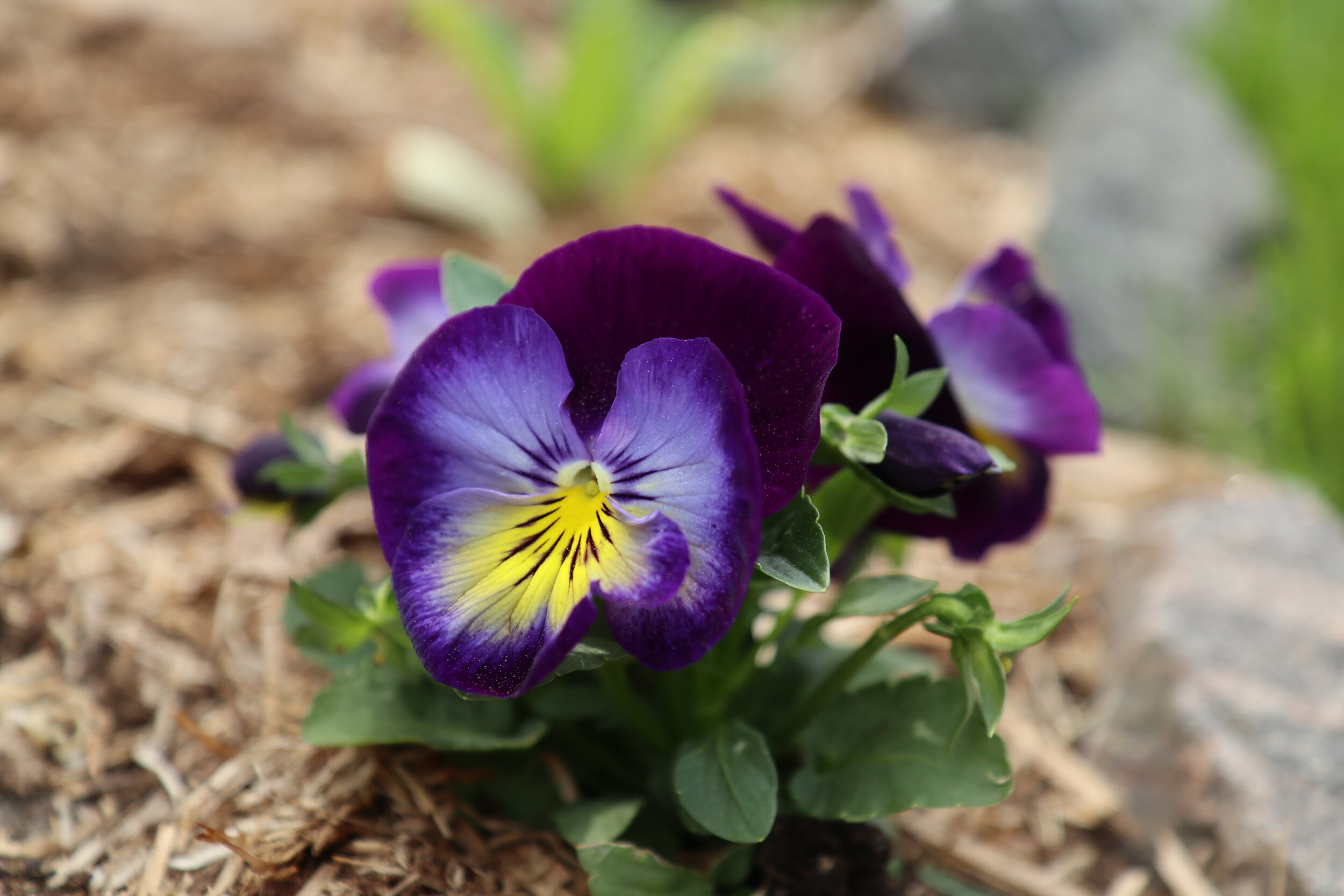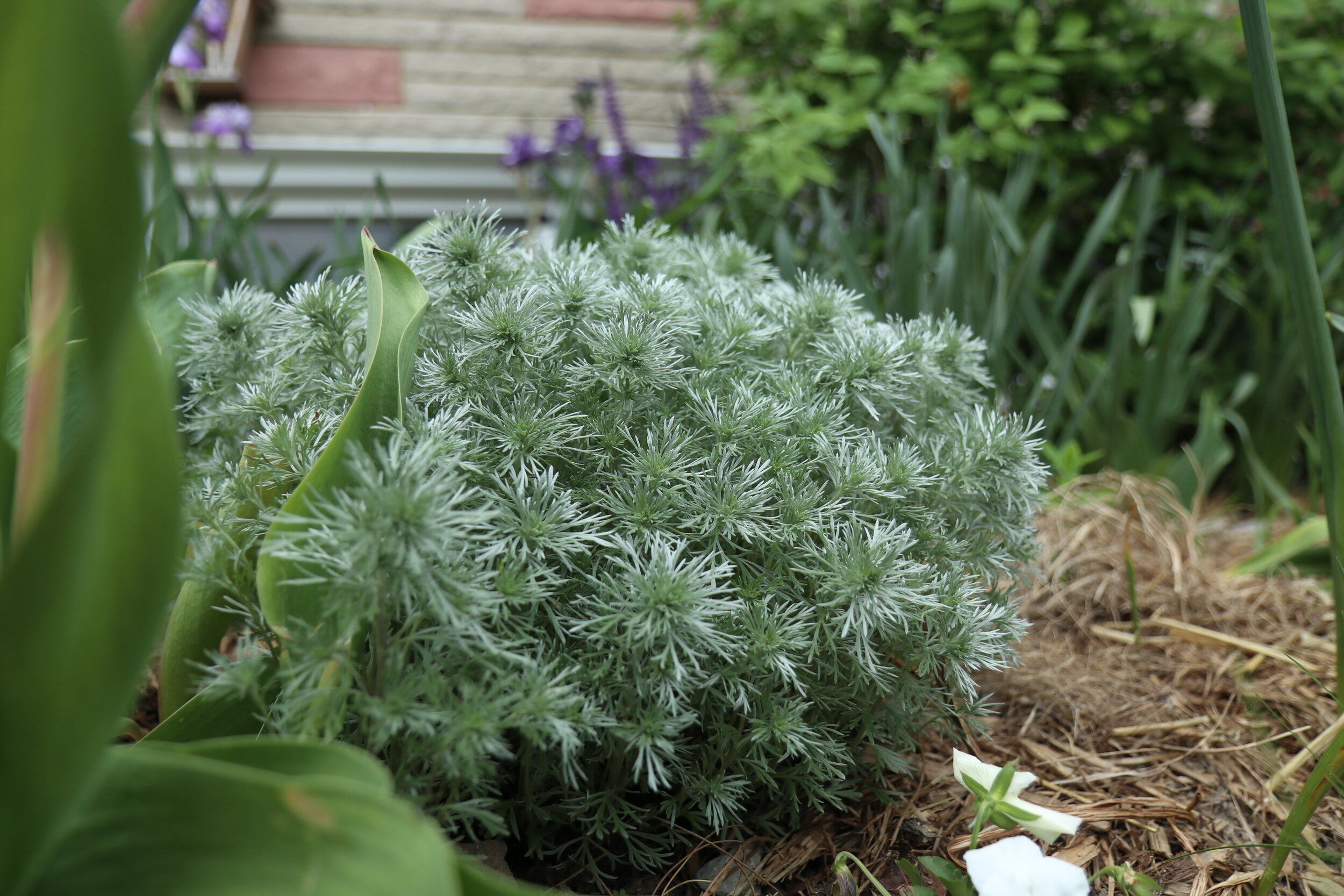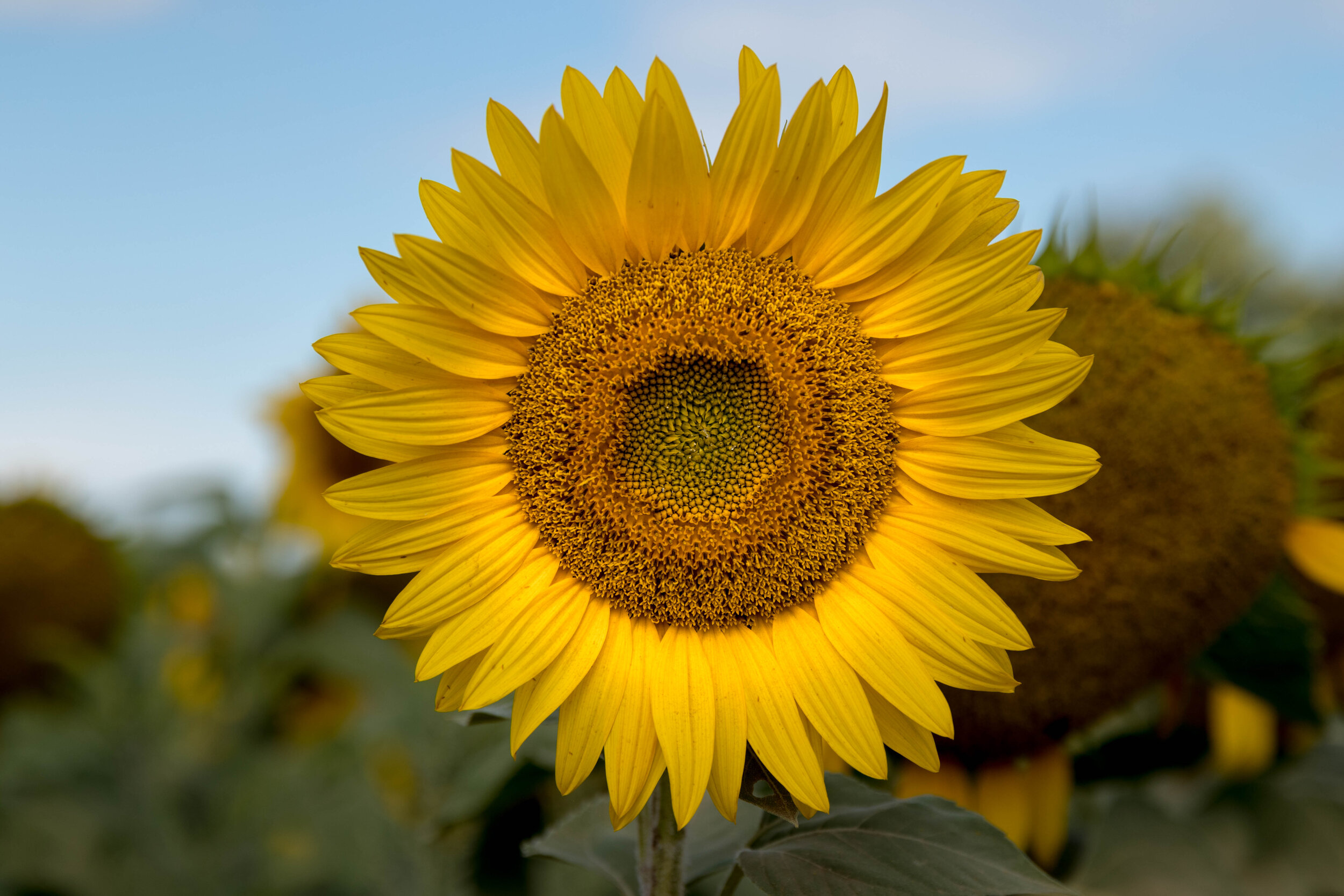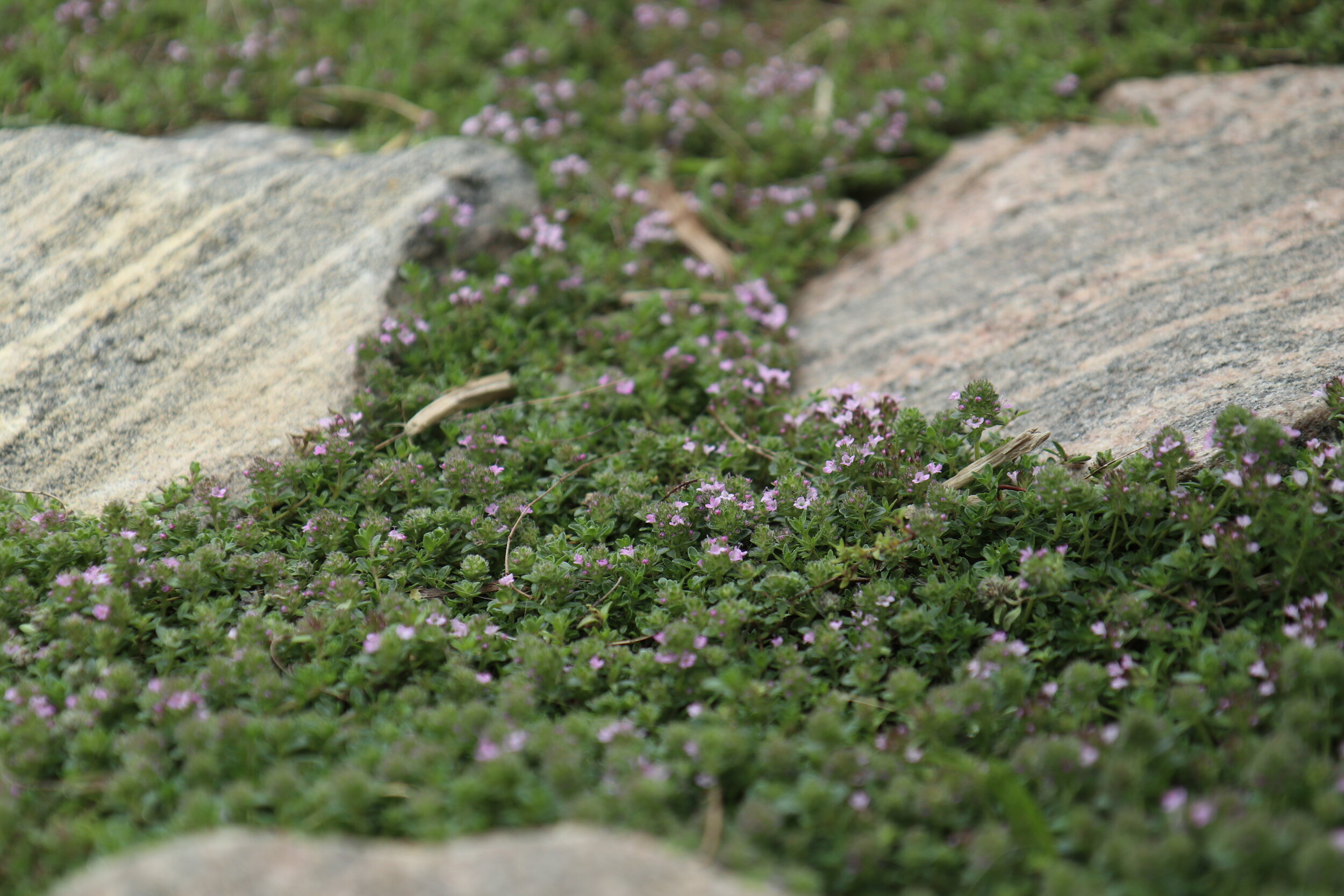Plants for Kids: Sensory Garden
Around the 6 month mark, babies bloom and become incredibly aware of the world around them. At this age they love nothing more then exploring and interacting with their environment. This exploration only evolves as their mobility increases. This makes it the perfect age to introduce a sensory garden.
We are most familiar with the five senses (taste, touch, hearing, sight, smell) but there are another two that often get overlooked. They tend to occur naturally within outdoor play and exploration. Proprioception and vestibular systems which refer to movement and body awareness. When designing a sensory garden for kids we aim to include stimulating experiences for all 7 senses.
10 Plants for a Kids Sensory Garden in Southern Ontario:










Strawberries
An ever-bearing variety (as opposed to June-bearing) will allow snacking from June to September. The bright red colour is bold and easy to spot, and sweet smell and soft texture make it both easy and enticing to eat, especially if you are practicing baby-led weaning. The size is ideal for small hands to grasp. They have shallow roots and work well in containers but with our winters be prepared to treat container strawberries as an annual if you don’t provide a little overwintering TLC. In-ground plantings are incredibly low-maintenance.
Pansies (Viola)
The petals of pansies come in a variety of colours and are soft and buttery to the touch, but also edible. They don’t have much flavour but when you are two, eating a flower is incredibly exciting and flavour doesn’t seem to matter much! An annual that is easily grown in containers or in ground. These are cool weather lovers that thrive in early spring and fall and can handle frosts.
Creeping Lemon Thyme (Thymus pulegioides 'Lemon')
There are a variety of edible thyme plants that will work, but the unexpected scent released when Lemon Thyme is walked upon stops many kids in their tracks. They grow well around stones and can work wonderfully in a path for offering different sensations underfoot while encouraging balance as children step from stone to foliage. The delicate leaves and flowers offer a much smaller scale experience then many are used to experiencing in the garden.
English Lavender (Lavandula angustifolia)
Primarily thought of for it’s scented properties, but favoured by me in children’s sensory gardens for many additional reasons. It is edible. Tea’s, ice cream, garnishes, baking, lavender can be tasted in many ways. It offers fuzzy and woody textures and the blooms offer a ‘rubbery’ texture before they open. The foliage is a spiked silvery green experience against the ‘fluffy’ purple blooms making it a treat for the eyes. The foliage and flowers can be pressed, dried, used as paint brushes, fairy wands, tickle sticks and more.
Silver Mound Artemisia (Artemisia schmidtiana ‘Silver Mound’)
As soft and fuzzy as a favourite teddy, this plant is huggable. It is low maintenance, well behaved and visually pleasing with its rounded form and silver colour.
Lambs Ear (Tachys byzantina)
Another plant that begs to be pet, and is attractive and low maintenance. This is a slow-spreading ground cover and won’t stay as a compact option like the silver mound. As toilet paper shortages ran rampant in 2020, this one made the rounds in meme’s as a toilet paper alternative.
Dwarf Mugo Pine (Pinus mugo)
To counter the soft and fuzzy elements, this dwarf evergreen is in scale with small hands and provides early ‘risky play’ through it’s needles. When new growth is appearing it will get what is called ‘pine candles’ at the tips. This is when you can prune for shape and to control the size. No tools needed, this makes a really great fine motor activity!
Alliums
You can make your own Truffula Forest by planting a series of these in your space. There are many varieties, and a few colours (purple, pink, white) to choose from. They are part of the onion family but are not edible. The stems are so incredibly slender and are topped with ‘firework’ like explosion shaped flowers. These flowers are bee and butterfly magnets while in bloom.
Once the blooms fade, the flower heads become green and rubbery. In this stage they make an excellent toy by acting like gears or lego, connecting to each other and gently locking in. If you leave them and allow them to dry further, the flower heads generate seeds. At this stage they take on an auditory aspect with the rattling. At all stages these flowers beg to be tapped, booped, waved and smacked against various objects giving them a proprioceptive role as well.
The pithy stems make a great straw, stick, crafting element, toy but most importantly, natural pollinator homes for overwintering. When cutting off the flower and stem, leave 6” of stem protruding above the soil to house pollinators.
Sunflower
For awe factor alone, sunflowers are great in a kids garden. They are easy for little ones to plant, fast growing for those with little patience, and their blooms can put a smile on everyone’s face.
The entire plant is edible, beyond just the seeds, although it’s not the most delectable snack. The stalk is fuzzy, the petals buttery, the seeds rough yet smooth, the leaves can be scratchy. While growing it doesn’t offer much for the ears but upon harvest it’s hollow stem, rattily seeds and scratchy head all offer auditory elements. It is beautiful for the eyes but also allows us to see the Fibonacci Sequence in nature.
These are many size and colour options, multiple head, single head, varying heights, some are better for eating seeds, others are better for cut flowers, and others are pollinator magnets. There is a sunflower for everyone.
Once harvested, sunflower heads make crafty stamps, harvesting seeds is a great fine motor activity, in fact, the entire plant has uses and can generate some unique research projects for older children. They can look into the buoyancy factors and the uses that sunflowers have served, historical and cultural roles such as trading, and art.
Laitris
A native plant to Southern Ontario, this fellow supports the ecosystem and our native pollinators, drawing in many unique moths, bees and butterflies. Not edible but not poisonous, it’s a safe addition in a kid friendly zone. The unfurling of this plant is very intriguing to watch, it has a unique leafing structure that reminds me of bicycle tassels or a flapper dress, adding a nice variety to the garden foliage palette.
The flowers are like pinky-purple bull rushes or corn dogs but they don’t bloom all at once. The blooms develop, shine and fade like a sparkler; top down.
Once the flowers fade they turn brown and take on a crunchy and then fuzzy texture, as the seeds develop. At all stages, from bloom to seed they make incredible fairy wands. The fluffy seeds have a similar draw to dandelion puffs but without the dread of all the future weeding. The seeds, if left to stay through the winter, hold snow beautifully but also feed small birds. The pithy stems become homes to pollinators.
It is my goal with Buying Thyme to connect the community to nature and practice sustainability practices so we can better our patch of the ecosystem. Our flowers invite you to slow down, savor simple joys, and celebrate the beauty of the seasons wherever you take them, but our blog teaches you how you can apply everything we have learned, on your own property! For our Southern Ontario specific gardening tips make sure to peruse our other blog articles here.
Buying Thyme is your local source for seasonal, sustainably grown flowers. Visit our flower stand where we offer locally gown, cut flowers, to Durham Region. All grown right here on our North Oshawa/Hampton micro flower farm.
Unlike most florists offerings, these flowers have a negative carbon footprint with no transportation, sprays or pesticides. Each year our collection of Ontario native plants grows, which not only offers more beautiful flowers to our clients but also contributes to restoring the local ecosystem.
To learn more about our floristry services and products or to visit the flower stand click here.









